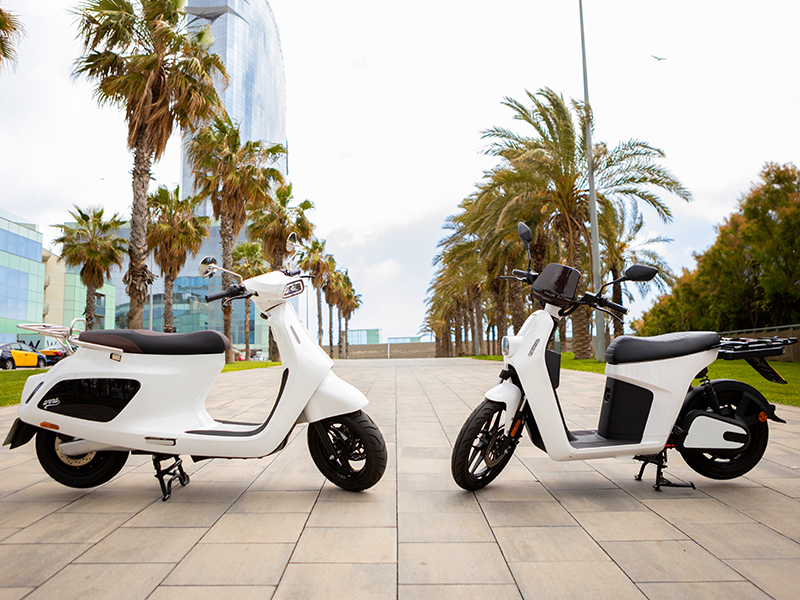The idea of replacing dead batteries with fully charged batteries in electric vehicles has been a dream that has been around for more than a decade. Despite the efforts of big brands, it seems that it is still far from reaching its moment of prominence.
Another thing is electric scooters.
The same idea has brought manufacturers together like never before in a global effort to create a standardized battery that works across multiple makes and models, opening the door to a new way of thinking in electric vehicle development.
In the West, the evolution and sales of electric motorcycles lag behind their four-wheeled counterparts.
Developing electric motorcycles and turning them into a profitable proposition on a large scale remains a daunting challenge due to the enthusiastic clientele of internal combustion technology and the challenges in sales and production numbers.
But with legislation on the way to end sales of two-wheeled vehicles that emit carbon. By 2030, even for smaller and lower-performance motorcycles in the UK – if the current government proposals are given the green light – there is an increasing need to address the issue of how to balance autonomy, performance, and price. electric scooters …there is an increasing need to address the issue of how to balance autonomy, performance, and price in a way that keeps customers purchasing them.
And battery swapping looks set to be an important part of the solution.
In the case of electric cars, the challenge of changing batteries is monumental. The design of the car must take this into account, and the large size and weight of the batteries demands an automated mechanical system. Plus, with an increasing number of electric vehicles integrating batteries into their frame to save weight and space, making them easily removable requires a complete engineering twist.
Also, imagine that a century ago car manufacturers forced you to use only their brand of fuel, incompatible with any other vehicle. Well, that is the current state of battery exchange technology in cars.
On two wheels, a clear divide is beginning to appear. While several brands focused on larger, higher-performance electric motorcycles are going the way of cars, integrating bespoke batteries into their frames as structural components. A second significant group has realized that battery sharing could be the key to a beneficial cycle, and that by working together to establish a standard (just as the early electronics companies rallied around the familiar AA batteries, C, D and AAA that are still in use today) open the door to cheaper and lighter electric motorcycles and scooters that have none of the range issues associated with fixed battery designs. In addition to being more sustainable.
In the case of electric motorcycles, more than in the case of cars, autonomy is a problem. The usual solution on four wheels has been to add larger and larger batteries up to the massive 210 kWh pack of the new Hummer EV and rely on the available torque from the electric motors to make up for the extra weight they bring.
However, this is not a viable solution on motorcycles, where every extra kilo is a disadvantage in terms of performance and handling, and where there is simply no room to infinitely increase the size of a battery.
As a result, they often struggle to reach 100 miles of real range, punctuated by long stops to recharge. Electric motorcycles may have smaller batteries than cars, but they don’t recharge much faster and often lack the refrigeration and electronics needed to benefit from fast chargers.
Battery swapping technology reverses the vicious cycle of larger batteries for motos, where more kWh means more weight, a bigger engine, bigger brakes, and stronger suspension, all of which add even more mass and volume to the mix.
As long as there is a widespread network of battery exchange stations (such as those offered by Smobery), which makes it possible to replace exhausted batteries with new ones in a matter of seconds faster, cheaper and cleaner than it would be to even fill up a tank of gasoline, stopping regularly to do so becomes a much more comfortable and practical task.
If they can reduce a motorcycle’s range to, say, 50 miles, but make the battery change process quick and easy, they’ve hit the nail on the head, as the battery, motor, brakes, frame and Suspension parts can be reduced in size and weight without loss of performance, adding efficiency all the way.
Since batteries are basically rented rather than owned by the customer, we at Smobery are of the opinion that motorcycles using them should be substantially cheaper. That old fear that batteries weaken over time no longer works, especially if we take into account that with battery stations they will always be ready to be used at the maximum charge level.
Is battery swapping the ideal solution for vehicle fleets from sharing or leasing companies? Yes. Is it.


Leave a Reply